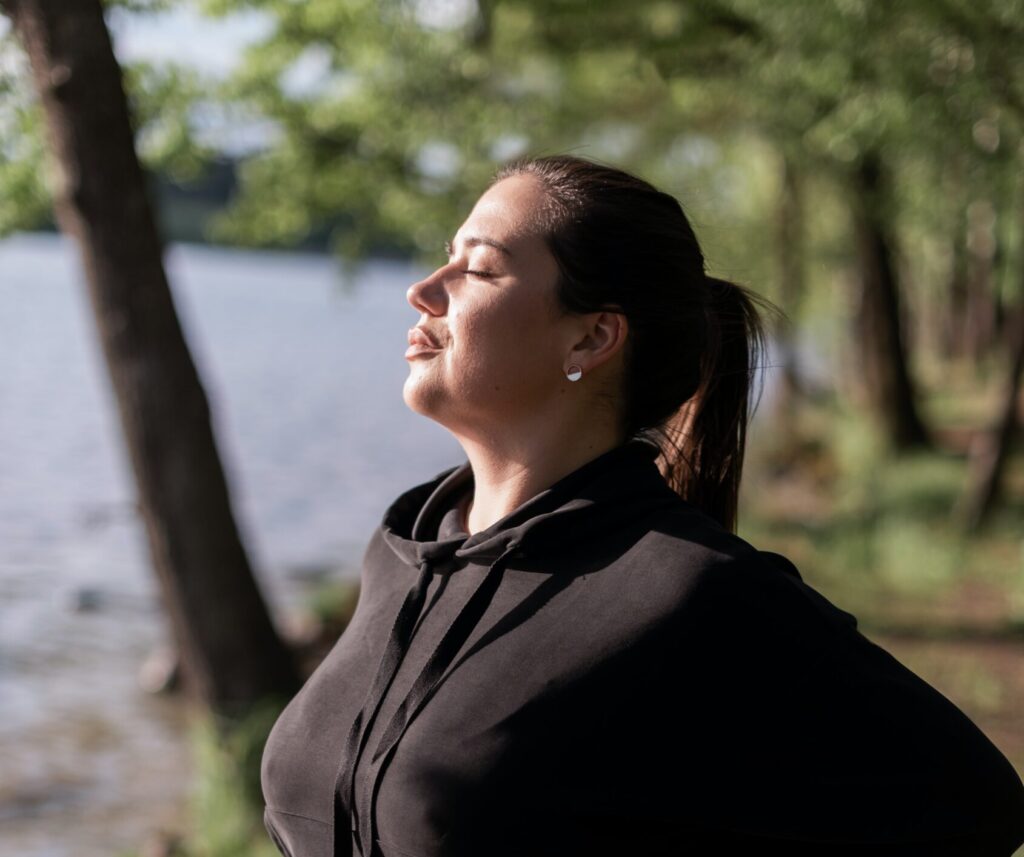Faster Trauma Healing with Brainspotting Therapy
Brainspotting: A New Way to Heal and Find Peace
You’re about to start your first session of Brainspotting trauma counselling. But before you do, take a moment, and connect with your body.
You’re outside having a casual conversation with a friend and you notice that you’re suddenly feeling tense and uneasy. You’re not sure why, you’re searching for a reason, and nothing comes to mind. Before you know it, you’re ending the conversation. You carry on with your day, but the uneasiness remains.
Have you ever experienced that?
When trauma is stored in the body, it’s very common in trauma counselling for you to reach a block when trying to understand what’s happening inside. It’s in these kinds of emotionally uncertain situations where Brainspotting can be useful. It’s a unique, cutting-edge therapy that can be used in trauma counselling to help when you’re feeling stuck.
It has the ability to locate, process, and gently release stored emotions. It can leave you feeling:
- Relieved from emotional pain or trauma symptoms
- Less troubled by difficult memories
- In control of negative thought patterns
- More present in your body
- More energized after rest

What is Brainspotting?
So how does this even work? Brainspotting isn’t like the traditional talk therapy that you may be used to in trauma counselling. It doesn’t even require you to talk much about your trauma. Sound pretty good right? It’s known to be less painful and less retraumatizing than other methods.
Brainspotting is when a specific eye position is directly connected to a memory or emotion. This is similar to the modality called Eye Movement Desensitization & Reprocessing (EMDR), except Brainspotting is usually a bit faster and less involved.
During a session, your therapist will help guide your eyes to different positions (up, down, left or right). While doing so, the therapist will ask you to notice how you feel.
By focusing these eye positions, or what they call “brainspots”, in a certain direction, it can help you directly address the issue you need to process with next to no effort. By focusing on the brainspot you and your therapist identified, the issue or emotion neutralizes on its own!
It can even uncover emotions and memories stored in the brain that you’re not even aware of… and neutralize it right then and there.
Remember that conversation where you suddenly felt tense and uneasy when talking to your friend? Trauma counselling using Brainspotting can help you find and understand these hidden feelings, and process them.

Why Consider Brainspotting for Trauma Counselling?
Imagine you’re in a therapy session, and a memory suddenly pops up. A memory of you in middle school being laughed at by the whole class.
From a Brainspotting point-of-view, this moment may be telling you that this memory has been subconsciously impacting you for a long time, without you even realizing it.
What makes brainspotting effective is that it enables you to access areas of your brain that retain pain, worry, or trauma. Unlike many other forms of trauma counselling, you don’t have to relive traumatic events or discuss every single detail to achieve healing.
Brainspotting can simply neutralize it!
Your body and mind naturally guides the process, showing you where healing needs to happen. All the while your therapist holds the healing space for you with support and attentiveness.
When is Brainspotting in Trauma Counselling Helpful?
You may have been going through trauma counselling and it’s been painful to talk about it. Or perhaps it’s been difficult to put your feelings into words. If so, you’re not alone.
It isn’t always easy to express the emotional truth of what you’ve been through, and sometimes talk therapy methods can prolong the process unnecessarily. But Brainspotting can provide direct access to pathways in your mind that store and process that specific emotion.
It can be helpful if you’re dealing with:
- Trauma
- Anxiety
- Attachment issues
- Substance use
- Posttraumatic stress disorder (PTSD)
- Chronic pain
- Depression
You don’t have to live with uncertainty and pain, or go through years of talk therapy to process trauma. Brainspotting can neutralize and provide relief and freedom.
What Will Happen in Your Brainspotting Session?
There isn’t a one-size-fits all approach to a brainspotting session. Your therapist will work with you to tailor each session to your specific healing needs. You may have a number of session to learn about your therapy goals and background before jumping into Brainspotting. Sometime it can be done right away.
You can expect to be guided through:
- Mindfulness/grounding
- Identifying the issue or feeling that there is to process
- Locating your “brainspot”
- Processing the emotion(s)
- Reflecting on the meaning
- Debriefing
To learn more about how Brainspotting can work for you in trauma counselling, click here.

Experience the Power of Brainspotting
At FreeMind Therapy, we understand that dealing with trauma and mental health challenges can be difficult. That’s why we aim to offer you the most cutting-edge, brain-based modalities including: Brainspotting – a therapy that works on a deeper level to help you feel relief and find peace.
Several of our therapists are trained in Brainspotting.
If any of this resonates with you, it may be time to explore how Brainspotting can help. Reach out to book a consultation with one of our trained Brainspotting therapists, and take the first step towards healing.






